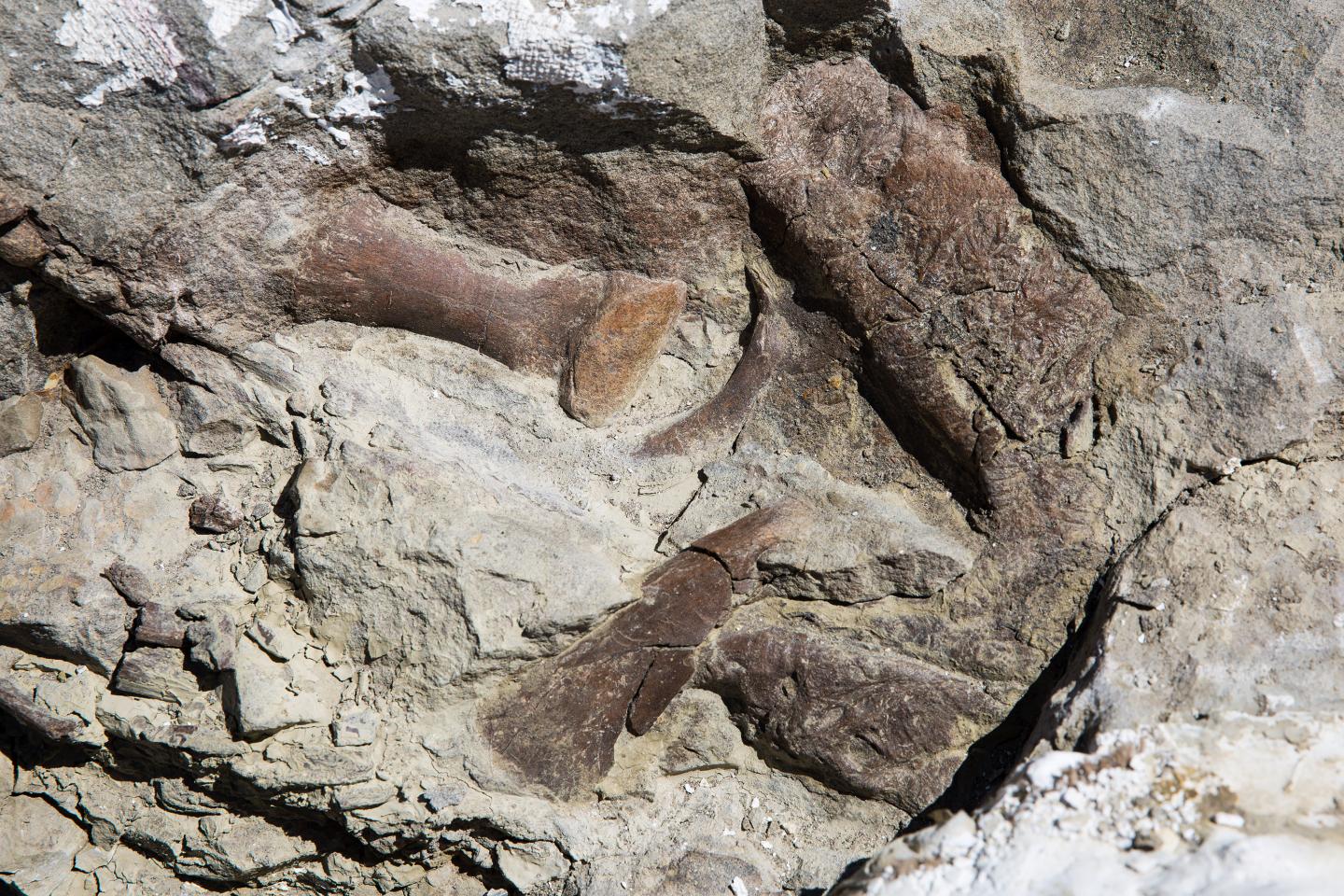
Toe bones, the upper jaw and snout of the fossilized remains of a tyrannosaur skeleton found in Grand Staircase-Escalante National Monument. The skeleton is the most complete of its kind found in the Southwest United States. Credit Mark Johnston/NHMU
The most complete fossil of a tyrannosaur has been discovered in southern Utah.
The 76-million-year old fossilized skeleton of the dinosaur was found in a remote field site at the Bureau of Land Management’s Grand Staircase-Escalante National Monument (GSENM) in 2015 and was airlifted on Oct. 15, 2017 to the Natural History Museum of Utah where it will be uncovered, prepared and studied.
The fossil is likely from a Teratophoneus curriei, known to inhabit western North America between 66 and 90 million years ago during the Late Cretaceous Period.
The fossil includes a nearly complete skull.
“With at least 75 percent of its bones preserved, this is the most complete skeleton of a tyrannosaur ever discovered in the southwestern US,” Randall Irmis, Ph.D., curator of paleontology at the Museum and associate professor in the Department of Geology and Geophysics at the University of Utah, said in a statement. “We are eager to get a closer look at this fossil to learn more about the southern tyrannosaur’s anatomy, biology and evolution.”
The fossil was found in the Kaiparowits Formation—part of the central plateau region of the monument where scientists believe the dinosaur was buried either in a river channel or by a flooding event on the floodplain that kept the skeleton intact.
“The monument is a complex mix of topography–from high desert to badlands–and most of the surface area is exposed rock, making it rich grounds for new discoveries,” GSENM Paleontologist Alan Titus, Ph.D., who originally discovered the fossil, said in a statement. “And we’re not just finding dinosaurs but also crocodiles, turtles, mammals, amphibians, fish, invertebrates and plant fossils–remains of a unique ecosystem not found anywhere else in the world.”
While many tyrannosaur fossils have been found in the northern U.S. and Canada over the last century, until recently little were found in the southern part of the U.S.
The researchers believe this particular tyrannosaur was a sub-adult between 12 and 15 years old, 17-to-20 feet long with a relatively short head—different from the typically longer-snouted look of northern tyrannosaurs.
According to Irmis, it took approximately 2,000 to 3,000 people hours to excavate the site and at least 10,000 hours of work remain to prepare the specimen for research, which will confirm whether it is a Teratophoneus or a new species.
“We’ll look at the size of this new fossil, it’s growth pattern, biology, reconstruct muscles to see how the animal moved, how fast could it run and how it fed with its jaws,” he said. “The possibilities are endless and exciting.”




